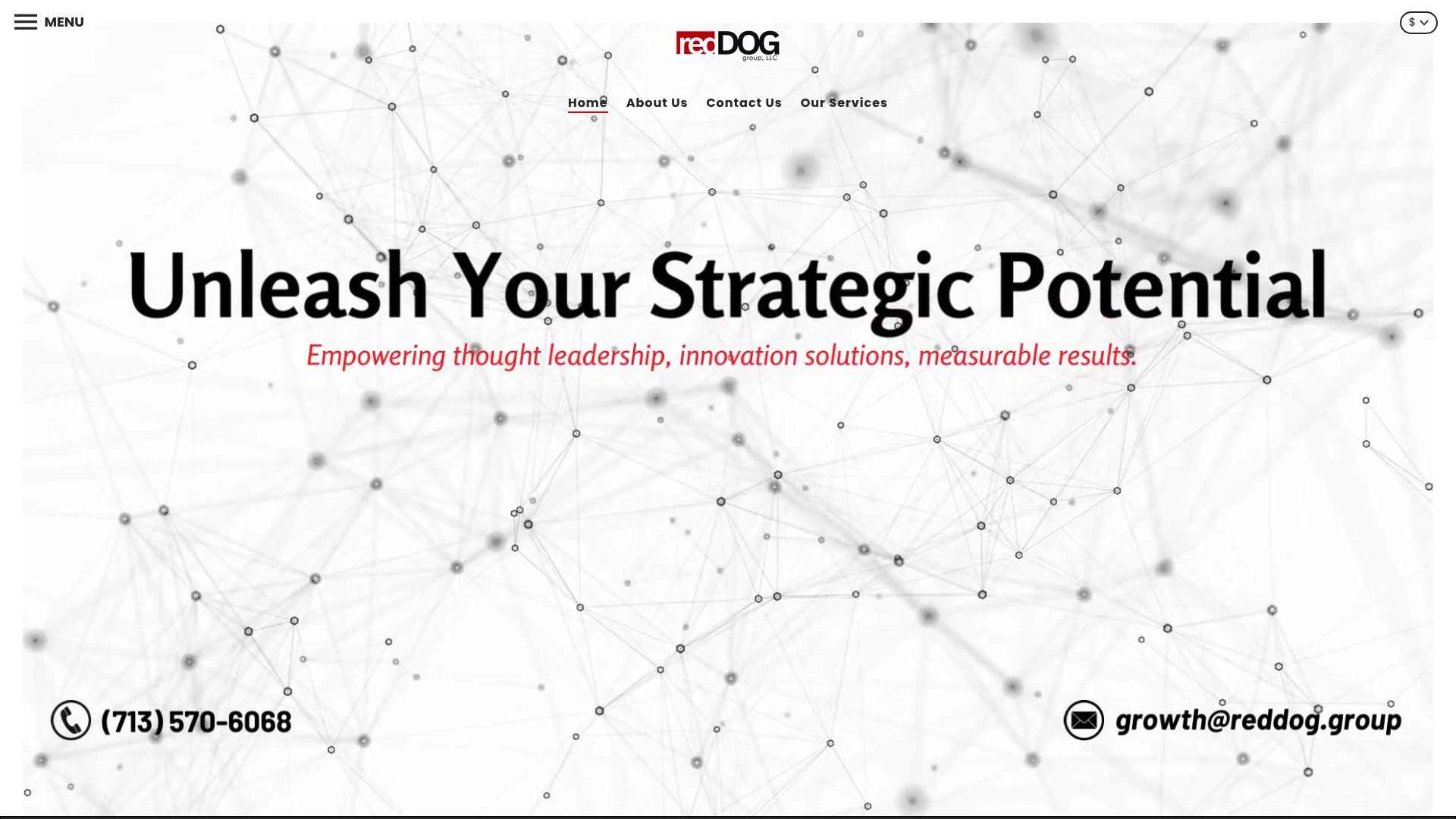
Understanding the Role of Branding in Growth
Posted on
Branding goes way beyond just picking a logo or matching your colors. Companies with strong brand identities enjoy a serious edge and consistently outperform competitors in shareholder returns, according to McKinsey. Most people think branding is just about visuals and slogans, but the real secret lies in how branding shapes trust, loyalty, and even your bottom line.
Table of Contents
- Defining Branding: What It Is And Why It Matters
- The Impact Of Branding On Customer Perception And Loyalty
- How Branding Drives Financial Growth And Performance
- Key Elements Of Successful Branding Strategies
- Real-World Examples Of Branding Leading To Business Success
Quick Summary
| Takeaway | Explanation |
|---|---|
| Branding is a strategic investment. | Effective branding enhances business reputation, leading to increased customer loyalty and premium pricing opportunities. |
| Emotional connection drives brand loyalty. | Brands that resonate emotionally with consumers foster deeper relationships, encouraging repeat purchases and customer advocacy. |
| Consistency builds trust. | Reliable brand messaging and experiences create a sense of authenticity, making customers more likely to remain loyal. |
| Successful branding goes beyond visuals. | A compelling brand narrative combines visual elements with emotional engagement, distinguishing it in a crowded market. |
| Measure brand performance financially. | Tracking metrics related to branding can reveal its direct impact on revenue growth and operational efficiency. |
Defining Branding: What It Is and Why It Matters
Branding transcends mere logos and color schemes. At its core, branding represents the comprehensive identity and narrative a business creates to distinguish itself in a competitive marketplace. Learn more about strategic branding approaches for small businesses and understand how a powerful brand can transform your business trajectory.
The Fundamental Definition of Branding
Branding is a strategic communication process that shapes how customers perceive and interact with a business. According to the American Marketing Association, it encompasses the visual, emotional, and rational elements that collectively create a unique market impression.
Key components of effective branding include:
- A memorable visual identity
- Consistent messaging
- Clear communication of core values
- Emotional connection with target audiences
Why Branding Matters for Business Growth
Successful branding directly impacts business growth by establishing trust, recognition, and differentiation. When consumers connect with a brand’s narrative, they are more likely to choose that product or service over competitors. Strong branding transforms transactions into meaningful relationships.
Businesses that invest in comprehensive branding strategies experience multiple growth advantages. These include enhanced customer loyalty, premium pricing potential, and increased market visibility. A well-crafted brand communicates professionalism, reliability, and a unique value proposition that resonates with target consumers.
The table below summarizes the foundational elements of effective branding as described in the article, helping to distinguish each component’s role in the brand-building process.
| Branding Component | Description |
|---|---|
| Memorable Visual Identity | Unique logos, color schemes, and design elements that stand out |
| Consistent Messaging | Steady communication tone and language across all channels |
| Core Values Communication | Clear articulation of what the brand stands for |
| Emotional Connection | Fostering resonance with the target audience through storytelling |
| Market Differentiation | Creating a unique impression apart from competitors |
Ultimately, branding is not about selling a product but about creating an experience and emotional connection that compels customers to choose your business repeatedly. It is a strategic investment that pays dividends through sustained customer engagement and long-term business success.
The Impact of Branding on Customer Perception and Loyalty
Customer perception and brand loyalty are intrinsically connected, forming a powerful dynamic that determines business success. Learn more about building omnichannel customer loyalty strategies to understand how sophisticated branding approaches can transform customer relationships.
Psychological Foundations of Brand Perception
Brand perception operates at a deep psychological level, influencing how consumers emotionally and rationally evaluate a business. According to research from SAGE Publishing, brand equity significantly impacts customer decision making by creating mental shortcuts that simplify complex purchasing choices.
Key psychological triggers in brand perception include:
- Emotional resonance with brand values
- Perceived quality and reliability
- Consistency of brand messaging
- Personal identification with brand narrative
Building Trust Through Consistent Brand Experience
Trust is the cornerstone of customer loyalty. Brands that demonstrate unwavering commitment to their core promises create a sense of reliability that transcends individual transactions. Consumers are more likely to remain loyal to businesses that consistently deliver on their brand promise, showcasing predictability and authenticity.
Successful brands understand that every interaction is an opportunity to reinforce their identity. From customer service interactions to product design, each touchpoint contributes to the overall brand perception. This holistic approach transforms casual customers into passionate brand advocates who not only repeat purchases but also actively recommend the brand to others.

Ultimately, effective branding is about creating a compelling narrative that makes customers feel understood, valued, and connected. It goes beyond visual aesthetics or marketing tactics, representing a profound commitment to delivering consistent, meaningful experiences that build lasting relationships.
How Branding Drives Financial Growth and Performance
Branding is not just a marketing expense but a strategic investment that directly impacts financial performance. Discover strategies to accelerate your business growth and understand how strategic branding translates into measurable economic advantages.
Financial Value of Strategic Branding
Strong brands generate significant economic value by creating premium pricing opportunities and reducing customer acquisition costs. According to research from McKinsey & Company, companies with robust brand identities consistently outperform competitors in shareholder returns and market resilience.
Key financial advantages of strategic branding include:
The following table highlights the key financial advantages of strategic branding identified in the article to illustrate how branding drives measurable business growth.
| Financial Benefit | How Branding Achieves This |
|---|---|
| Higher Profit Margins | Enables premium pricing by building trust |
| Reduced Customer Acquisition Costs | Boosts recognition and referral rates |
| Enhanced Customer Lifetime Value | Increases repeat purchase likelihood |
| Greater Investor Confidence and Valuation | Builds a reputation for reliability and quality |
| Lower Marketing Expenditure | Strengthens organic visibility and loyalty |

- Higher profit margins through premium pricing
- Reduced marketing expenditure through brand recognition
- Enhanced customer lifetime value
- Greater investor confidence and market valuation
Quantifiable Brand Performance Metrics
Modern businesses can measure brand performance through sophisticated financial indicators. These metrics demonstrate how branding directly contributes to revenue growth and operational efficiency. Successful brands create a virtuous cycle where strong brand perception attracts more customers, generates higher revenue, and enables continued investment in brand development.
Brands that systematically track their financial performance understand that intangible assets like reputation and customer loyalty translate into tangible economic outcomes. By investing in comprehensive branding strategies, businesses create a competitive advantage that goes beyond traditional marketing approaches.
Ultimately, strategic branding represents a sophisticated approach to business growth. It transforms marketing from a cost center into a revenue generation engine, enabling organizations to build sustainable financial performance through powerful, resonant brand narratives.
Key Elements of Successful Branding Strategies
Developing a powerful branding strategy requires a holistic approach that goes beyond superficial design elements. Explore comprehensive retail strategy insights to understand how strategic planning transforms brand performance.
Core Components of Strategic Branding
Successful branding strategies integrate multiple sophisticated elements that work synergistically to create a compelling market presence. Strategic branding is not a static concept but a dynamic framework that evolves with market conditions and customer expectations.
Key foundational elements include:
- Clear and distinctive brand positioning
- Comprehensive understanding of target audience
- Consistent messaging across all communication channels
- Authentic representation of brand values
- Adaptability to market changes
Developing a Comprehensive Brand Architecture
A robust brand architecture requires meticulous planning and ongoing refinement. Brands must develop a comprehensive framework that encompasses visual identity, communication strategy, and emotional resonance. According to Harvard Business Review research, successful brands create a multidimensional narrative that connects rationally and emotionally with their target audience.
The most effective brand strategies transcend traditional marketing approaches. They create a holistic ecosystem where every interaction reinforces the brand’s core identity. This means aligning visual design, customer experience, product quality, and communication into a seamless, coherent narrative that builds trust and differentiation.
Ultimately, strategic branding is about creating a distinctive identity that resonates deeply with customers. It transforms a business from a mere provider of products or services into a meaningful brand that customers genuinely want to engage with and support.
Real-World Examples of Branding Leading to Business Success
Branding transforms businesses from commodity providers to compelling market leaders. Learn strategies to optimize your business growth workflow and understand how strategic branding creates remarkable success stories.
Small Business Branding Transformations
Successful branding is not limited to large corporations. Small businesses can create powerful brand identities that differentiate them in crowded markets. According to Harvard Business Review, strategic branding enables smaller organizations to compete effectively against larger competitors by creating unique emotional connections.
Key characteristics of successful small business branding include:
- Authentic storytelling
- Targeted market positioning
- Consistent visual and communication strategies
- Deep understanding of customer needs
- Agile and responsive brand development
Strategic Brand Positioning Case Studies
Real-world examples demonstrate how thoughtful branding drives significant business growth. Companies that invest in comprehensive brand strategies often experience exponential improvements in customer engagement, market share, and financial performance.
Small businesses that successfully leverage branding understand that it is more than a logo or marketing campaign. Effective branding creates a comprehensive narrative that resonates with target audiences, transforming transactional relationships into genuine customer loyalty. These brands communicate their unique value proposition through every interaction, building trust and differentiation in competitive markets.
Ultimately, strategic branding is about creating a distinctive identity that goes beyond products or services. It represents a holistic approach to business communication that connects emotionally and rationally with customers, driving sustainable growth and long-term success.
Ready to Transform Your Brand into a Growth Engine?
So you understand that branding drives business growth, but are you still struggling to turn brand perception into measurable results? If you want your business to stand out, build real loyalty, and achieve revenue breakthroughs, you need a partner who specializes in tailored brand growth strategies and complete marketplace management. Explore how our Digital & Business Consulting Services deliver proven outcomes for small and medium-sized brands just like yours.

Let Reddog Group help you leverage the core principles from this article—unique identity, omnichannel mastery, and consistent brand experience—across every customer touchpoint. Visit https://reddog.group now to see how our experience managing 50+ brands and 30,000 SKUs can fuel your next level of growth. Take the first step today and unlock new potential for your brand.
Frequently Asked Questions
What is the core definition of branding?
Branding is a strategic communication process that shapes how customers perceive and interact with a business, encompassing visual, emotional, and rational elements to create a unique market impression.
Why is branding important for business growth?
Branding is crucial for business growth as it establishes trust, recognition, and differentiation, allowing businesses to connect with consumers, foster loyalty, and drive repeat purchases.
How does branding influence customer perception?
Branding influences customer perception by creating emotional resonance, perceived quality, and consistent messaging that simplifies purchasing decisions and builds trust over time.
What are the key elements of a successful branding strategy?
Key elements of a successful branding strategy include clear brand positioning, understanding the target audience, consistent messaging, authentic representation of brand values, and adaptability to market changes.
Leave a comment: